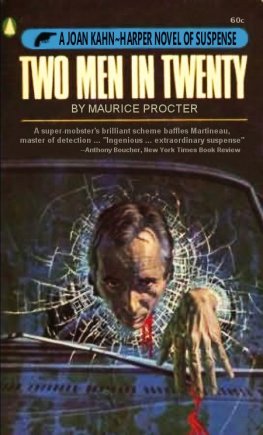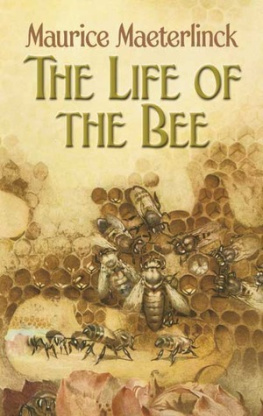The Vl dHiv Raid:
The French Police at the Service of the Gestapo
By Maurice Rajsfus
Translated by Levi Laub
Foreword by Michel Warschawski
DoppelHouse Press 2017
Publishers Cataloging-in-Publication data
Names: Rajsfus, Maurice, 1928-, author. | Laub, Levi, translator. | Warschawski, Michel, foreword author.
Title: The Vl dHiv raid: the French police at the service of the Gestapo / by Maurice Rajsfus; translated by Levi Laub; with a foreword by Michel Warschawski.
Description: Includes bibliographical references. | Los Angeles, CA: Dopplehouse Press, 2017.
Identifiers: ISBN 978-0-9978184-8-2 (ebook) | LCCN 2017946124
Subjects: Police--France--History--20th century. | France--History--German occupation, 19401945. | Vichy (France)--Politics and government. | Jews--Persecutions--France. | Holocaust, Jewish (19391945)--France--Personal narratives. | France--Ethnic relations. | France--History--German occupation, 19401945. | BISAC HISTORY / Holocaust | HISTORY / Europe / France | HISTORY / Jewish
Classification: LCC D802.F8 R285 2017 | DDC 363.2/0944--dc23
THE PUBLICATION IN ENGLISH of Maurice Rajsfus book on the Vl dHiv Raid is right on time. Originally published fifteen years ago the book made known to a new generation one of the most sordid chapters in the history of the French State and its collaboration with the Nazi occupiers. The author relates the story of the Vl dHiv Raid in a hundred extremely well documented pages, describing how 13,152 men, women, children and old people were delivered by the French gendarmes to the Gestapo, to be imprisoned at the winter sporting stadium in Paris, the Vlodrome dHiver, and then in the detention camp at Drancy, before being sent to the death camps in Eastern Europe.
But Maurice Rajsfus is not only a historian of the raid: he lived it in his flesh, saw it with his own eyes, and if he had not had the audacity and ingenuity of a Parisian street urchin, son of immigrant Polish Jews that he was, he would have suffered the same fate as his parents, deported and assassinated in Auschwitz.
Without making improper comparisons, the roundup of the Vl dHiv is a very current topic. Maurice Rajsfus narrative can help us grasp both the logic and the implications of a policy of exclusion of communities because of their ethnic, national or religious origin, resulting that they are not protected by the State of which they are a part. Indeed, since that time, these policies of exclusion practiced by States defining themselves as democratic have not led yet to mass massacres, as was the case under the Vichy regime. But that fact cannot justify the silence and indifference of the average citizen who can see discrimination as it happens.
Whether Roma or other communities lacking the right color or accent, or immigrants fleeing war or hunger, in democratic Europe millions of men and women are victims of exclusion, repression, and racist acts, which are committed by state institutions, fascist parties, and too often ordinary citizens. Xenophobia is steadily growing and racism is becoming more uninhibited. For the first time since the victory over Nazism, racist and xenophobic views can be expressed popularly without disguise, far beyond the utterances and movements of the extreme right.
Both in the States and in Europe the policies leading to roundups and deportation have historically been practiced with mechanisms strangely similar to the Vl dHiv Raid. First the identification of the other, then its stigmatization, then the social exclusion followed by the expulsion from the national body and at the same time, a gradual rise in popular violence and state violence, which can go as far as massacre. This is no more clearly illustrated in the United States than in the fate of the American Indian.
The Vl dHiv Raid is an emblematic moment specifically in the policy of racist discrimination against Jews (and others) in Vichy France, which led tens of thousands of them to extermination camps. In order to be effective, this policy required the collaboration of several actors: first, the Nazis and the German occupation forces, who put this policy in place and directed it. Then the collaboration of the Vichy regime, with its politicians, gendarmes and fascist militias. Often they were overzealous andas Maurice Rajsfus reminds us in his bookthey expanded the roundup of foreign-born Jews to children of French nationality who were not included in the original German orders. Without the active assistance of the French administration and the French police, the Vl dHiv Raid, and later on the deportation of more than 75,000 Jews from France, could not have been done so effectively.
And then there is a third actor, to whom Maurice Rajsfus had previously devoted two other books: the notables of the Jewish community of France, organized in the UGIF (Union gnrale des isralites de France). This latter played a role similar to that of the Jewish Councils (Judenrat) in the ghettos of Eastern Europe. This foreword is not the appropriate place to evaluate the choices open to the community leaders, nor the responsibilities of each of them. While Maurice has been able to make a convincing case regarding the UGIFs collaboration, the responsibilities of the individuals concerned require more nuances. There was a mix of the corrupt, self-seeking calculators, cowards and naifs who believed in saving one group of Jews by sacrificing anotherin particular the so-called foreignersas well as true resistors who knew how to use their position to save the greatest number possible.
Maurice Rajsfus research on the UGIF is in line with that of other historians of the Jewish Councils in Poland and leads to the same conclusion: the official institutions of the Jewish communities facilitated the policy of exclusion which led to extermination.
The deportation of 75,000 Jews of France, including the more than 13,000 rounded up in the Vlodrome dHiver, can and must open our eyes to the contemporary mechanisms of racist exclusion. How can we ever forget the roundups of Algerians during the war of national liberation and the massacre that followed on October 17, 1961? How can we fail to make the connection to Donald Trumps policy towards Mexican and Central American refugees? The clown of the White House is not a laughing matter: we do not forget that our parents generation was replete with jokes about another clown who shouted obscenities at Munich and Nuremberg, before they realized that a bloody monster was hiding behind this pathetic character who, during the thirteen years to come, would provoke the deaths of tens of millions of human beings.
In telling us the story of the Vl dHiv Raid, Maurice does not speak of the numerous acts of solidarity on the part of non-Jewish French towards their neighbors, friends, or even ordinary passers-by. Certainly, the great majority of French society collaborated in the deportation of the Jews of France, or at least closed its eyes. Despite the claims of General de Gaulle, France was not a resisting country, and the resistors were a small minority until the moment the Allied forces liberated France from the Nazi occupation, the moment when hundreds of thousands of men and women rewrote the story of their lives during the previous five years. That said, there were thousands of good people who did things, big or small, to try to assist the persecuted Jews. Including during the Vl dHiv Raid.














